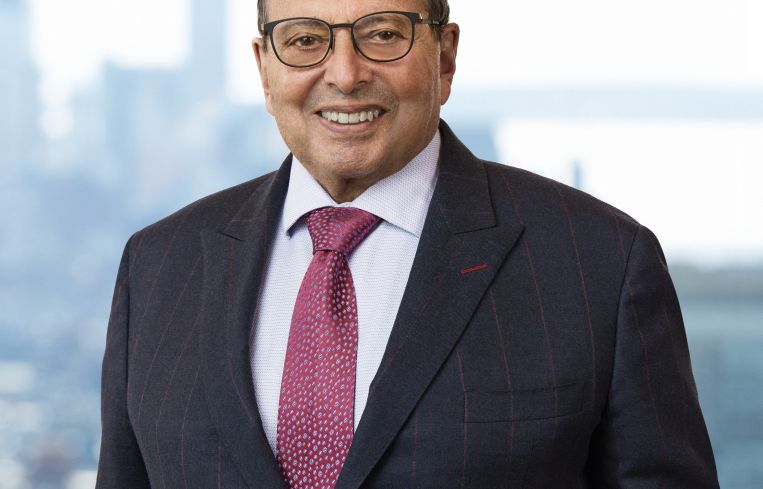Sunday Summary: Everything You Knew About Office Is Wrong
By The Editors August 25, 2024 9:00 am
reprints
Well, maybe we’re exaggerating just a little bit in the headline above, but when Douglas Durst — the head of one of the most storied real estate families in New York City (or, if you will, the world) — says that the office market has recovered, we listen.
Indeed, “In 2023 alone, The Durst Organization inked upward of 1 million square feet of leases,” Durst wrote in a column for Commercial Observer last week, “our biggest year since 2018.”
Granted, Durst was mostly talking about the higher end of the market, but it would be difficult not to notice that vacancies are only 6 percent for Class A office around Bryant Park, and premium rents can reach the $180 to $200 per square foot range.
It would be equally difficult not to acknowledge some of the deals that have crossed our desks in just the past week — like a 400,000-square-foot renewal for Christie’s space at Tishman Speyer’s 20 Rockefeller Center.
That certainly doesn’t mean there isn’t plenty of pain left at the lower end of the office market. But, it’s important to note the good news.
Multifamily mania!
Since the pandemic began in 2020, one of the first proposed solutions to the office surplus was to use it to answer the great deficit in urban multifamily.
A lot of developers rethought this idea when they began examining the actual nuts and bolts of conversion (What about bathrooms? What about floor plates? What about bedroom windows?) … however, is the rethink in need of a rethink?
We rethink it is.
According to Dan Garodnick’s Department of City Planning, some 69 office owners have inquired about potential conversions in New York City. To put this in context: there were just 34 conversions in Gotham between 2010 and 2020. And Garodnick’s office is trying to smooth the process by tamping down time-sucking extra steps.
“The [city’s Office Conversion Accelerator] Program has a goal of getting building permits in six months or less for projects that have the right to proceed under zoning,” Garodnick told CO. “So things like the replacement of windows in landmark buildings requires approval from the Landmarks Commission; changes in interior partitions and things like that which require approvals by the Department of Buildings; Fire Department approval for new alarm systems. These are examples of things that the conversion accelerator aims to assist with for buildings that are otherwise eligible to convert.”
Just to prove they’re serious, we’re starting to see obsolete product meet the wrecking ball, like 655 Madison Avenue, which submitted plans to be torn down and replaced. (Although what Williams Equities is going to ultimately replace it with is not known.)
Because regardless of what happens to office, residential is in demand in many urban markets.
This is not to say that multifamily is foolproof. J.P. Morgan, for instance, just sold the 240-unit 232 East Second Street in Los Angeles to FPA Multifamily for $86.1 million, which is 26 percent less than it paid for the building in 2020.
Moreover, this asset class has expenses the likes of which it simply didn’t have a few years back. Insurance is such a dizzying expenditure that a number of affordable housing developers recently had to band together to form their own insurance company.
That said, there is still an insatiable appetite for multifamily out there. Last week we saw Foulger Pratt and Tryline Capital lay down $107.8 million for a 364-unit multifamily complex in Washington, D.C.; Rockrose just bought an empty lot from Madison Realty Capital in Cobble Hill for $65 million; and the Albanese Organization is planning an affordable senior housing project in the Bronx.
Meanwhile, suburban markets like New Jersey are upping their game. More than 75,000 New Yorkers have left Gotham for the Garden State since 2022, and suburban New Jersey counties such as Hudson, Essex, Union and Passaic have answered the call, issuing permits for nearly a quarter of a million units.
Importantly, the capital is out there for this asset class. When Atlanta-based multifamily investor Cortland started a value-add multifamily fund, their target was $1 billion. They blew past that goal this week and raised $1.5 billion.
No wonder housing policy is crossing the political / CRE divide. And we expect even more focus on Washington if what Jerome Powell said on Friday comes true in September.
And now for something completely different
Real estate is a climb. Of course we mean that figuratively. (Even if the words “literally” and “figuratively” apparently mean the same thing now – see “the dictionary is literally wrong.”) But one real estate figure is exploring the literal climb.
We’re talking about TruAmerica Multifamily’s Matt Ferrari. (Not to be confused with some distant relation Vic Ferrari.)
In between purchases like the 194-unit Charleston Hall in Nashville, Tenn., or a hush-hush deal for a 284-unit property in Utah, the guy is a Jon Krakauer-worthy mountaineer. He’s climbed everything from Lenin Peak in Kyrgyzstan, to Cotopaxi in Ecuador, to Mt. Kilimanjaro in Tanzania to, of course, Mt. Everest’s North Col.
His saga is worth a nice, leisurely Sunday read. Of course, there’s plenty of other items that might capture your interest, like Yeshiva University’s new ASA College campus in Herald Square, or Sonder’s recent deal with Marriott, or Miles Treaster being named Cushman & Wakefield’s new head of capital markets, but you won’t want to miss Matt Ferrari’s side life on the edge. (And we won’t give away how he trained for some of these challenges, which is our favorite detail.)
See you next week!



